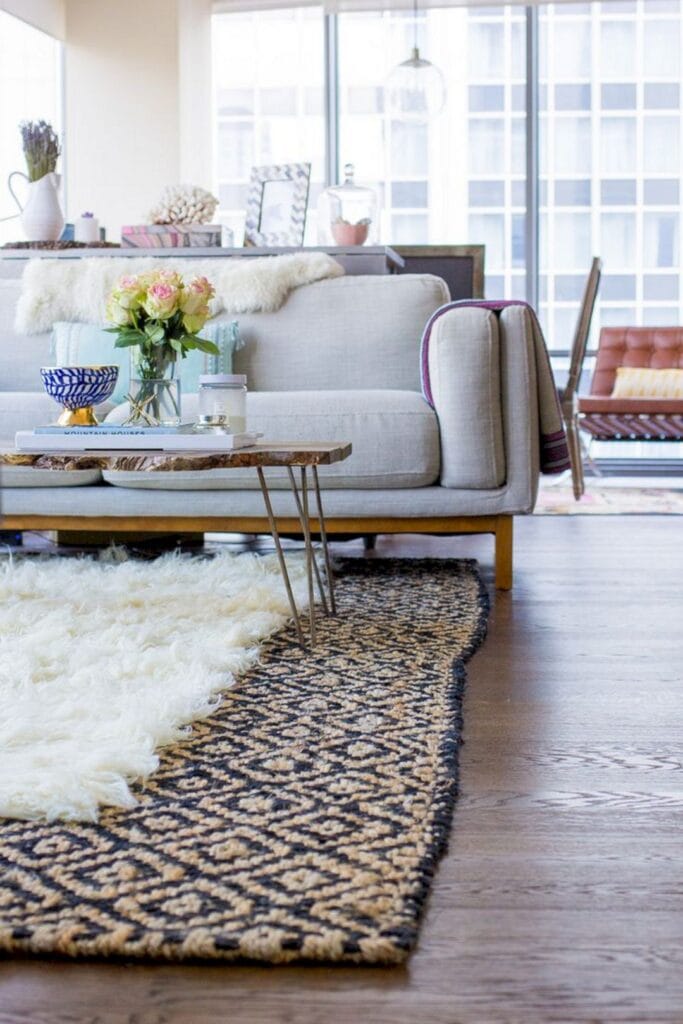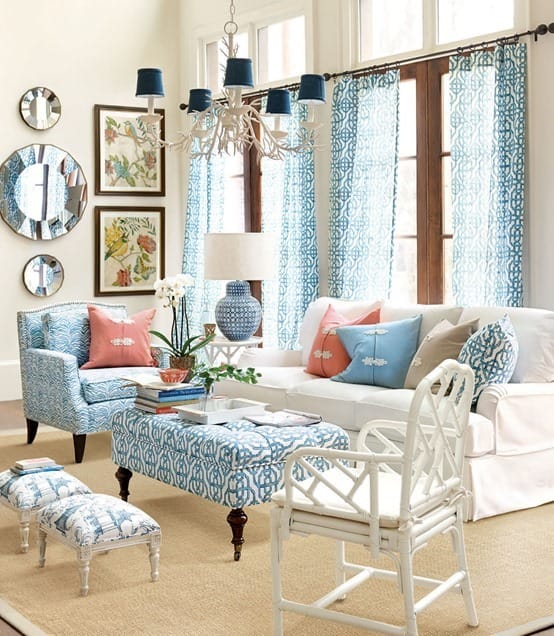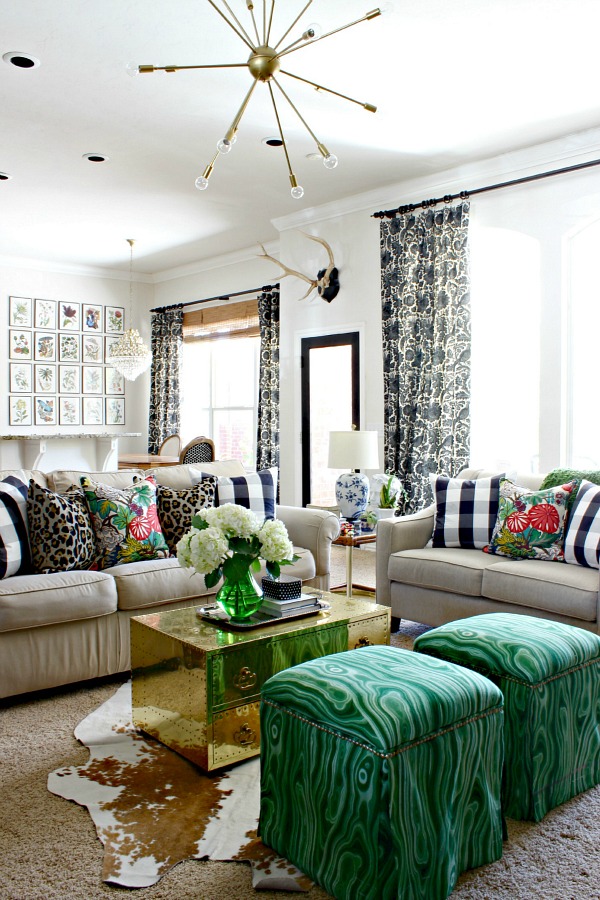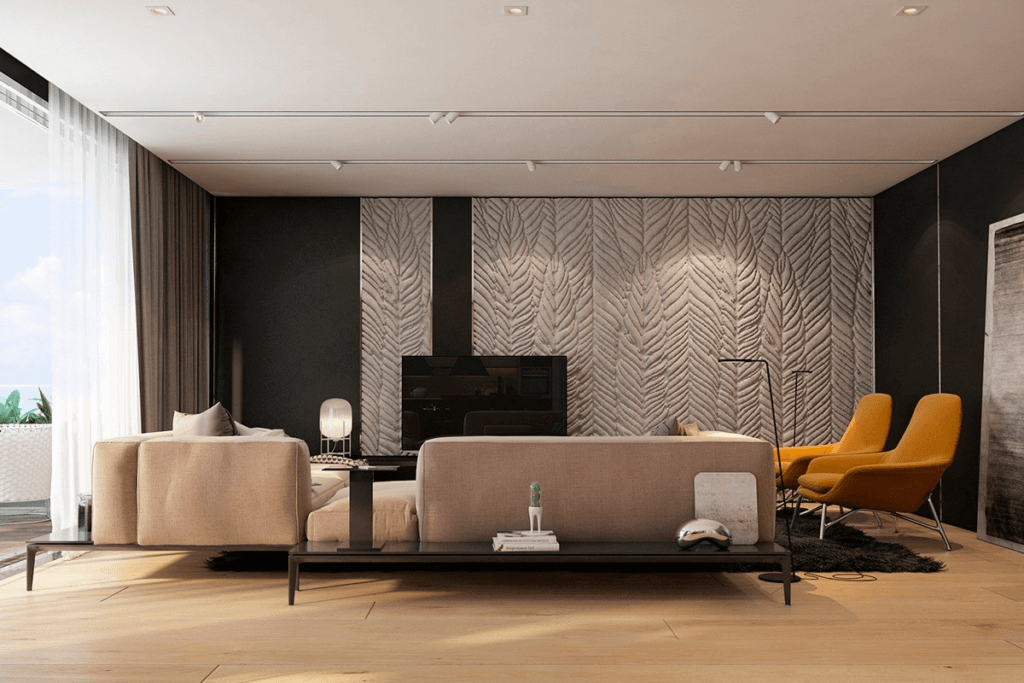Have you ever walked into a room and felt like it just clicked? Chances are, that space had a perfect mix of patterns and textures, making it feel warm, interesting, and put-together. Mixing these elements isn’t just about piling on fabrics and prints—it’s an art form that, when done right, brings character and personality to your home. If you’ve ever been unsure how to combine textures and patterns without creating a chaotic mess, don’t worry—we’ve got you covered. Let’s dive into some simple ways to make your home look stylish.
The Basics of Mixing Patterns
1. Start with a Neutral Base
Think of neutrals as your blank canvas. Before adding bold patterns, anchor the space with foundational pieces in soft, versatile shades like beige, grey, or white. A neutral couch, floor, or wall colour creates a calming backdrop, allowing patterns to pop without overwhelming the room. Plus, keeping the base neutral means you can easily switch out patterns whenever the mood strikes.

2. Pick a Star Pattern
Every great design has a focal point, and in this case, it’s your dominant pattern. Maybe it’s a bold geometric area rug, a floral wallpaper, or a statement sofa. This pattern will set the tone for everything else, so choose something you absolutely love.
3. Add Supporting Patterns
Once you have your statement piece, bring in smaller patterns that complement rather than compete. If your main pattern is large and bold, mix in smaller-scale patterns like subtle stripes, checks, or tiny florals. It’s all about creating balance so that nothing feels too heavy or overpowering.
4. Stick to a Cohesive Colour Scheme
Mixing patterns is much easier when you keep the colours in sync. If your primary pattern has earthy tones, stick to hues in that family. Want a bolder look? Go for high-contrast pairings like black and white with a pop of colour. Limiting your palette to two or three main shades will keep things stylish and intentional.

https://centsationalstyle.com
5. Break It Up with Solids
Patterns bring energy, but too many can feel chaotic. Enter solid colours. Solid-coloured throw pillows, curtains, or furniture help create visual “breathing space,” allowing your patterns to shine without clashing.
Playing with Texture to Add Depth
1. Mix Soft and Hard Textures
A room without texture can feel flat. Combining soft fabrics like velvet, wool, or linen with harder surfaces like wood, metal, or glass adds balance. Imagine a soft-knitted throw over a leather chair or a sleek marble coffee table paired with a chunky wool rug—these contrasts make a room feel layered and inviting.
2. Blend Different Fabric Finishes
Mixing fabric types adds dimension to your space. Try pairing a smooth silk pillow with a rough jute rug or a soft cotton blanket with a chunky knit throw. If you’re new to textural layering, start with small decor items like cushions and build from there.
3. Bring in Natural Materials
Nature offers some of the best textures! Woven baskets, wooden furniture, stone countertops, and leafy plants add depth and warmth. A rattan chair or a ceramic vase with a rough, handmade feel can instantly elevate a space.

4. Mix Matte and Glossy Finishes
Play with light by incorporating both matte and glossy textures. A velvet sofa paired with a glossy ceramic lamp, or a rustic wooden table topped with a sleek glass vase, creates a dynamic and visually interesting contrast.
5. Think Outside the Box
Textured wallpaper, macramé wall hangings, sculptural decor—there are so many ways to introduce texture beyond fabric. Layering in unique elements like woven light fixtures or a stone accent wall adds that extra touch of depth.
Easy Ways to Style Your Home with Patterns and Textures
1. Rugs: The Ultimate Foundation
Rugs do more than add warmth—they set the tone for the entire space. If you love patterns but don’t want them everywhere, a patterned rug is a great way to introduce them subtly. Layering rugs is another fun trick—try placing a smaller, patterned rug over a large neutral jute one for extra dimension.
2. Throw Pillows: Effortless Pattern Mixing
If you’re nervous about committing to patterns, start small with pillows. Try mixing a bold floral pillow with a classic striped one, or a rich velvet cushion with a woven linen one. Stick to a cohesive colour palette to keep the look intentional.
3. Statement Furniture Pieces
A single piece of textured furniture—like a rattan accent chair, a tufted headboard, or a velvet ottoman—can elevate a room instantly. The key is contrast: if your main furniture pieces are sleek and smooth, add texture through accessories and upholstery.
4. Layered Window Treatments
Curtains aren’t just functional—they add style and texture, too! Try layering sheer linen curtains with heavier velvet drapes for a sophisticated, dimensional look. Bonus: It makes your space feel extra cozy.
5. Wall Treatments for Extra Personality
Consider adding wallpaper with subtle patterns, exposed brick, or wooden panelling to bring more texture to your walls. Want something simpler? A gallery wall with frames in different materials (wood, metal, glass) adds instant texture and personality.

6. Don’t Forget Balance
Balance is the secret ingredient to making mixed patterns and textures work. Distribute them evenly throughout the space—avoid clustering all the bold patterns in one corner. If one section feels too busy, add a neutral or solid piece nearby to ground it.
7. Layered Lighting for Texture
Lighting isn’t just about brightness—it can add texture, too. Woven pendant lights, glass chandeliers, or even fabric-wrapped lampshades introduce layers and depth. Use a mix of overhead lights, table lamps, and floor lamps for the best effect.
Final Thoughts
Mixing patterns and textures isn’t about following rigid rules—it’s about creating a space that feels uniquely you. Start small, experiment, and don’t be afraid to switch things up. Whether layering cosy textiles, playing with bold patterns, or introducing new materials, the key is to have fun and let your personality shine through. Happy decorating!
